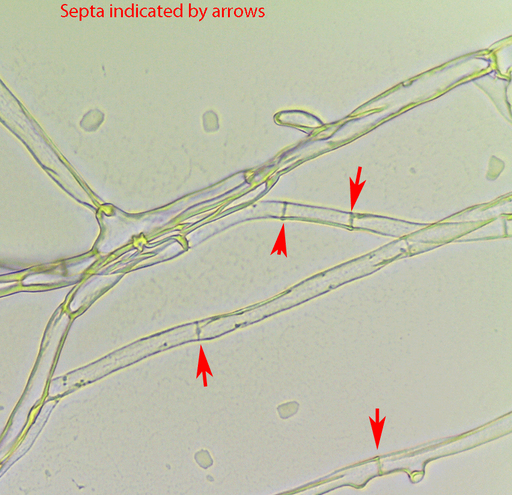- hyphae (the plural from hypha) is a long, branching filamentous structure of a fungus and also found in Actinobacteria.
- hyphae are collectively together called a mycelium
- A hypha consists of one or more cells surrounded by a tubular cell wall
- In most fungi, hyphae are divided into cells by internal cross-walls called “septate hyphae” for example “Aspergillus”, while some other fungi have non-septate hyphae, meaning their hyphae are not partitioned by septa and this type is called “Coenocytic hyphae“
Image may be NSFW.
Clik here to view.
Clik here to view.

Forms of hyphae – Septate and Coenocytic Hyphae
Image may be NSFW.
Clik here to view.
Clik here to view.

Penicillium is a septate fungus – the individual cells are separated by cross walls called septa
Image may be NSFW.
Clik here to view.
Clik here to view.

Non-Septate Hyphae (Coenocytic hyphae)
- The third form of hyphae called “Pseudo hyphae“, They are the result of incomplete budding where the cells remain attached after division, and Yeast can form pseudohyphae.
Image may be NSFW.
Clik here to view.
Clik here to view.

Pseudohyphae from Candida Albicans
